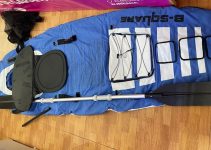Inflatable kayaks are a hit. But having owned two, I can tell you that they require care and maintenance. At least compared to the classic and rigid sea kayaks that I have. You won’t read about all this advice for caring for your kayak anywhere else online. So pay attention.
WHERE DO I WASH THE INFLATABLE KAYAK?
Well, there are several options, and you should assess what works best for you. Ideally, wash it in a clean place where you have access to water and that is in the shade. It’s important to avoid direct sunlight so you don’t get scorched.
It’s about washing it. If we’re in a dirty place, or with elements that could scratch or puncture the kayak… we’re off to a bad start. If that space is in the sun, we’re going to get overwhelmed while deflating, washing, and drying. It takes much longer than getting ready to paddle.
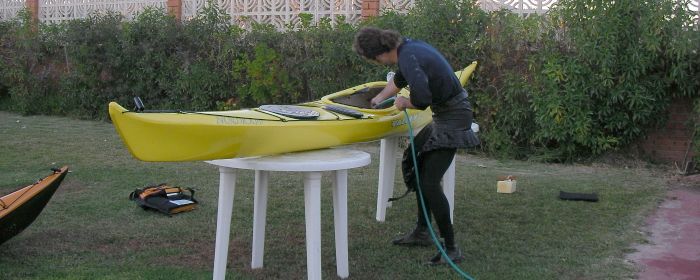
A plan B is to take the kayak or inflatable canoe , deflate it, and put it in a large tub. Then take it to a gas station, your house, or a place where you can wash and dry it properly.
FRESH WATER, SALT WATER
Everything I’m telling you is different if you use it in the sea or in fresh water. Seawater is very corrosive in the medium and long term. Also, there is usually sand in the sea, which is very abrasive. That’s why you should be more careful if you use an inflatable kayak in the sea. Fresh water is more friendly.
WHAT DO I WASH IT WITH?
The best is just fresh water. Very occasionally, we can use a neutral soap or very diluted gel. In the sea, you have to wash it after each use. No exceptions. In fresh water, it’s enough to remove any dirt.
HOW DO I WASH IT?
Well, inflated is the best way to wash and dry it. If you can remove the floor, that’s ideal. If you can’t remove it, deflate it before pouring water. That way, you can clean well between the side floats and the floor.
Another detail before pouring water, close the valves to prevent moisture/dirt from entering. Remove any water that may remain with the plugs that these kayaks usually have at the bottom. If there are any drops left, a cloth is best to remove them and ensure drying beforehand.
The best thing is a hose. But since that’s often not possible, we have to look for alternatives. Public fountains, showers, and foot washes… can provide us with fresh water. A watering can is a way to make the water go further and cover the entire kayak (I’ve done it with my sea kayaks ).
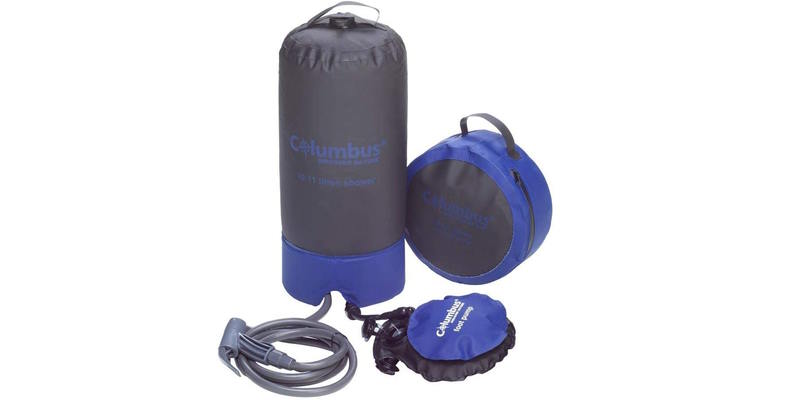
Another option is fumigation backpacks (I’ve used this). They spray water nicely, and with a small amount, we can wash a kayak decently. An alternative is portable showers. We can carry both options in the car, which is great if we don’t have access to fresh water. It’s also cool for the camper van life.
Something I’ve also seen is letting the kayak dry, removing the sand with a brush, and then washing it. At home or with a bucket of water and a cloth.
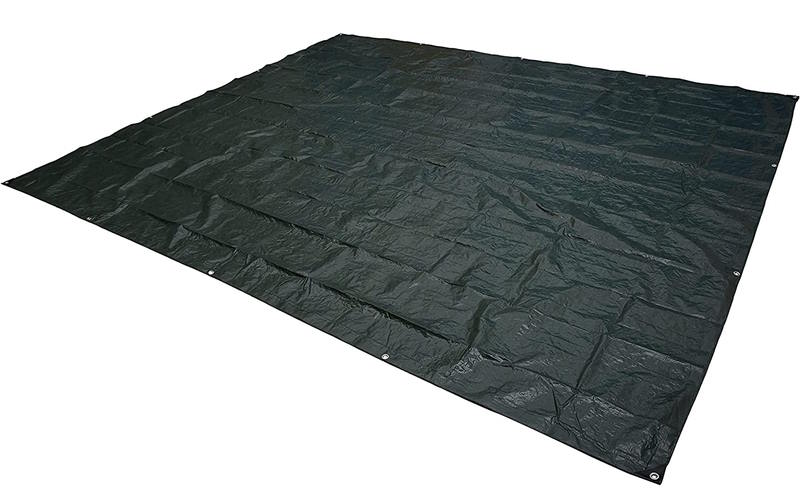
MORE CARE FOR YOUR INFLATABLE KAYAK
One thing I do is carry a polyethylene tarp. It folds up quite a bit and is useful for inflating and deflating the kayak on a clean surface. This way, we avoid scratches and potential punctures. There are products designed to protect our inflatable kayaks from UV rays. It’s true that our boat’s material already has protection, but a little help each year doesn’t hurt.
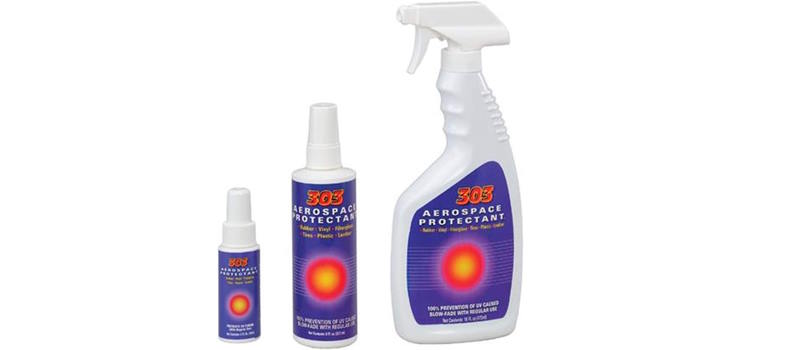
Something important is not to leave an inflatable kayak in the sun for too long. The air expands, and it’s not likely to explode, but it can create leaks. Difficult to find and fix. If you can’t leave it in the shade, deflate the floats a little. And place the hull facing the sky. A trick is to use the tarp I mentioned to put it on top and protect it from the sun’s rays.
And even if you have the kayak on the ground or in the water, it doesn’t hurt to secure it. At least if you lose sight of it. A strong gust of wind can carry it away.
FOLDING THE INFLATABLE KAYAK
This is another important issue for extending the life of the inflatable kayak. Try to always fold it in the same way, or very similarly. To do it well, it helps to empty the air well. And to achieve this effectively, it’s best to remove the last traces of air with the pump. But be careful, not all pumps deflate.
Everywhere recommends storing it in a cool, dry place as part of care and maintenance. It’s important that it doesn’t have heat spikes from things like stoves, and that the sun doesn’t hit it. I would add that bugs or dirt don’t get in.
DRYING THE INFLATABLE KAYAK
Almost as important as washing it well, is drying it correctly. So that moisture doesn’t generate mold that will spoil it. Especially in less accessible parts and therefore difficult to repair . An alternative is to dry it acceptably, and then dry it perfectly at home. When you are convinced that it has no moisture, store it.
If you think of using an electric dryer or compressed air, you better forget it. It has to dry while inflated, and if possible, not in the sun. And if you remove the water you can with a cloth or sponge, you’ll speed things up.
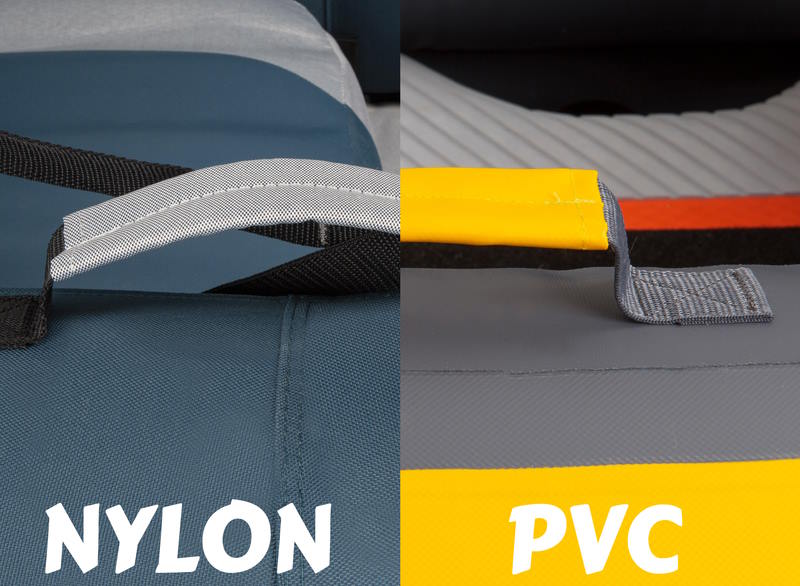
Saying that nylon kayaks with floats take much longer to dry than those that only have one chamber (usually made of layers of PVC). Nylon lets water through, PVC does not. Keep this in mind before buying. In the photo you can see the different finish.
I hope you liked this post and that you share it on social media. In any case, if you have any questions about care and maintenance, don’t hesitate to send an email.


